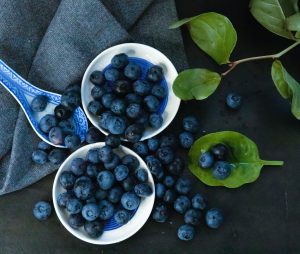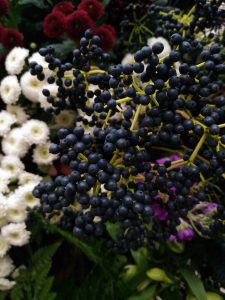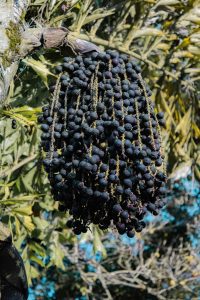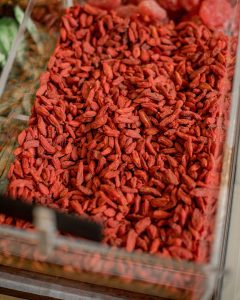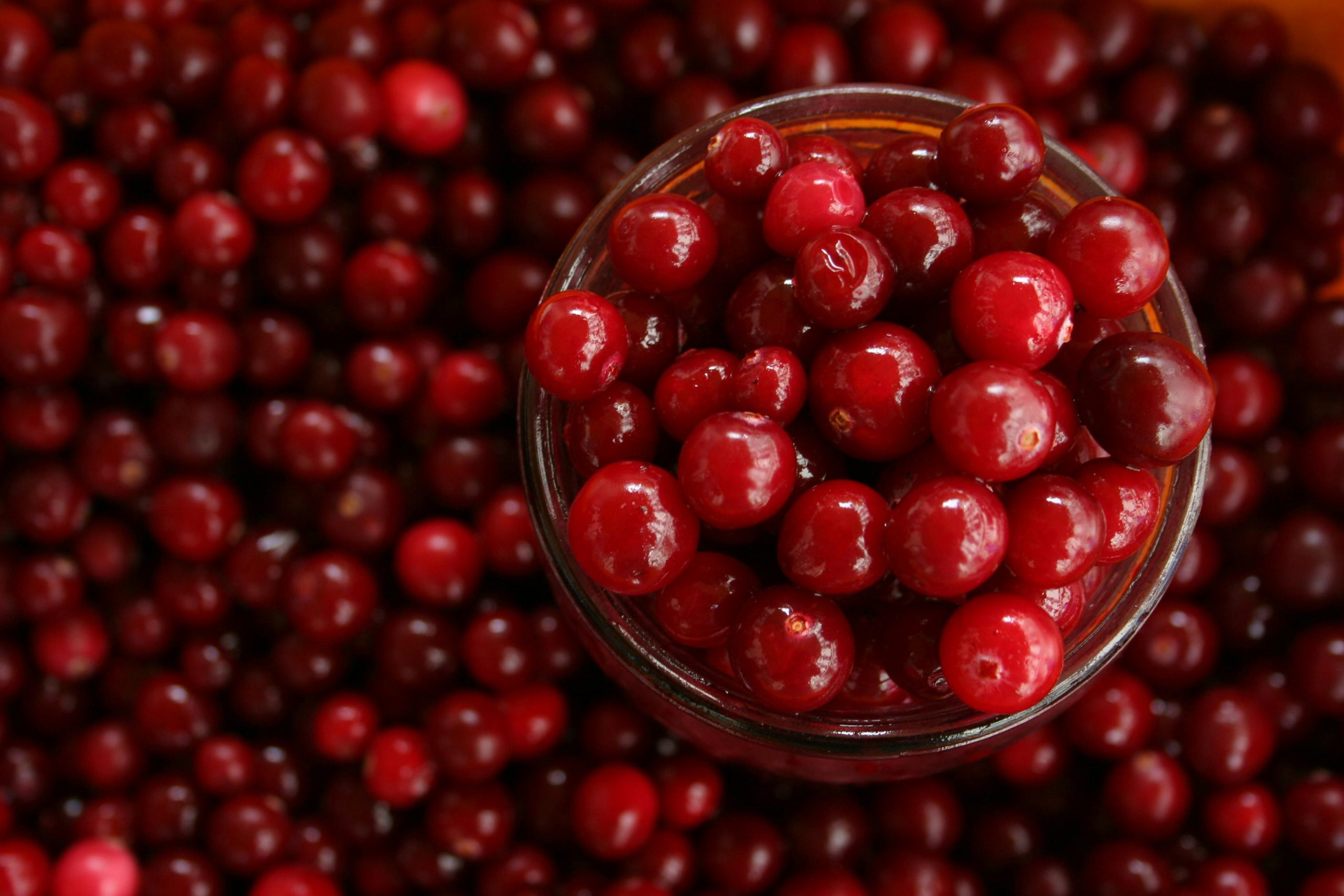
What Is a Cranberry?
A cranberry is a small, tart, and vibrant red berry that belongs to the Vaccinium genus. Scientifically known as Vaccinium macrocarpon, cranberries are native to North America and thrive in acidic, sandy bogs and marshes. Renowned for their distinctive flavor, these berries are a staple in various culinary applications. They are commonly consumed in the form of juices, sauces, and dried snacks, offering a delightful balance of tartness and sweetness.
Cranberries are celebrated not only for their culinary versatility but also for their potential health benefits. Rich in antioxidants and vitamin C, cranberries are believed to contribute to immune system support and may have urinary tract health benefits. Cultivated in both the United States and Canada, cranberries play a significant role in festive holiday meals and year-round cuisine, adding a burst of color and flavor to a diverse range of dishes.
Why Do We Eat Cranberries?
We eat cranberries for several reasons, driven by their unique flavor, versatility, and potential health benefits:
- Distinctive Flavor:
- Cranberries have a distinct sweet-tart flavor that adds a unique taste to various dishes and beverages.
- Culinary Versatility:
- Cranberries are used in a variety of culinary applications, including sauces, juices, jams, baked goods, and dried snacks. They enhance both sweet and savory dishes.
- Holiday Traditions:
- Cranberry-based dishes, particularly cranberry sauce, are a staple during festive holiday meals, such as Thanksgiving and Christmas.
- Nutritional Content:
- Cranberries are rich in antioxidants, particularly proanthocyanidins, and vitamin C. These compounds contribute to overall health and are believed to have potential benefits for the immune system.
- Urinary Tract Health:
- Some studies suggest that cranberries may help prevent urinary tract infections (UTIs) by preventing bacteria from adhering to the urinary tract walls.
- Dried Snacks:
- Dried cranberries, also known as craisins, are popular as snacks or additions to salads and cereals, providing a convenient way to enjoy their flavor and nutritional benefits.
- Beverages:
- Cranberry juice is a common beverage, known for its refreshing taste. It is consumed both on its own and as an ingredient in cocktails and mixed drinks.
- Preserves and Jellies:
- Cranberries are used to make preserves, jellies, and jams, which can be spread on bread or used as accompaniments to various dishes.
- Health-Conscious Choices:
- The nutritional profile of cranberries, coupled with their potential health benefits, makes them a choice for those seeking antioxidant-rich foods and natural remedies.
In summary, the consumption of cranberries is driven by their distinctive flavor, culinary adaptability, association with holiday traditions, and perceived health benefits, making them a versatile and popular fruit in various cuisines and dietary choices.
When Do We Eat Cranberries?
Cranberries are consumed at various times and occasions, and their usage spans a wide range of culinary applications. Here are common occasions when people eat cranberries:
- Holiday Meals:
- Cranberries are a quintessential part of holiday meals, particularly during Thanksgiving and Christmas. Cranberry sauce is a traditional accompaniment to roasted turkey or other festive dishes.
- Year-Round Cooking:
- Cranberries are used throughout the year in cooking and baking. They add a burst of flavor to a variety of dishes, from salads and sauces to desserts and baked goods.
- Snacking:
- Dried cranberries, also known as craisins, are popular as snacks. They can be enjoyed on their own, mixed with nuts, or added to trail mixes for a sweet and tart treat.
- Beverages:
- Cranberry juice is a refreshing beverage enjoyed year-round. It can be consumed on its own, mixed with other juices, or used as a base for cocktails and mocktails.
- Breakfast:
- Fresh or dried cranberries can be incorporated into breakfast dishes, such as cereals, oatmeal, yogurt, and muffins, to add flavor and nutritional value.
- Preserves and Jams:
- Cranberry preserves, jams, and jellies are spread on toast or used as toppings for pancakes and waffles.
- Salads:
- Cranberries, either fresh or dried, are often added to salads to provide a sweet and tart element. They complement both green salads and fruit salads.
- Desserts:
- Cranberries are commonly used in desserts like pies, tarts, cakes, and cookies. Their vibrant color and tartness add complexity to sweet treats.
- Cookouts and BBQs:
- Cranberry sauce or relish can be served alongside grilled meats, adding a tangy contrast to savory flavors.
- Health-Conscious Choices:
- Some individuals incorporate cranberries into their diet for their perceived health benefits, including antioxidant content and potential urinary tract health support.
In essence, cranberries are a versatile fruit enjoyed in a variety of dishes and settings, making them a flavorful and adaptable ingredient throughout the year.
Ingredients of Cranberries
Cranberries, being a natural fruit, consist of various components that contribute to their flavor and nutritional profile. Here are the main elements found in cranberries:
- Water:
- Cranberries have a high water content, contributing to their juiciness and refreshing nature.
- Natural Sugars:
- Cranberries contain natural sugars, primarily fructose, which provides their characteristic sweet-tart flavor.
- Vitamins:
- Cranberries are a source of vitamins, particularly vitamin C, which is an antioxidant that supports the immune system. They also contain small amounts of other vitamins, including vitamin A and vitamin K.
- Dietary Fiber:
- Cranberries provide dietary fiber, which promotes digestive health and contributes to a feeling of fullness.
- Antioxidants:
- Cranberries are rich in antioxidants, including flavonoids and polyphenols, which help combat oxidative stress in the body.
- Organic Acids:
- Cranberries contain various organic acids, including citric acid and quinic acid, which contribute to their tart flavor.
- Minerals:
- Cranberries provide minerals such as potassium, manganese, and copper, which play essential roles in various physiological processes.
It’s important to note that the specific nutritional content can vary slightly depending on factors such as whether the cranberries are consumed fresh, dried, or processed into products like juices or sauces. Consuming cranberries in their natural state allows you to benefit from their nutritious components without any additional ingredients.
Types of Cranberries
Cranberries come in various types and varieties, each with its own characteristics in terms of flavor, size, and usage. Here are some common types of cranberries:
- American Cranberry (Vaccinium macrocarpon):
- The most widely cultivated and commercially available cranberry variety, known for its deep red color and tart flavor. This variety is commonly used for juice, sauces, and dried cranberries.
- European Cranberry (Vaccinium oxycoccos):
- Also known as small cranberry or bog cranberry, this variety is smaller than the American cranberry and has a more acidic taste. It is often found in the wild and used in traditional European recipes.
- Highbush Cranberry (Viburnum opulus):
- While not a true cranberry, the highbush cranberry is a different species. It produces red berries that are similar in appearance but have a distinct taste. These berries are often used in jams and jellies.
- Wild Cranberry (Vaccinium vitis-idaea):
- This variety, also known as lingonberry or cowberry, is smaller than the American cranberry and has a more intense tartness. It is often found in northern regions and is used in jams, sauces, and desserts.
- Stevens Cranberry:
- A cultivated variety known for its large size and vibrant red color. Stevens cranberries are commonly used in commercial cranberry production.
- Ben Lear Cranberry:
- Another cultivated variety, Ben Lear cranberries are known for their deep red color and are often used for juice and sauce production.
- Early Black Cranberry:
- This variety ripens earlier than others and is recognized for its dark red to almost black color. It is commonly used in fresh and processed cranberry products.
- Howes Cranberry:
- Known for its deep red color and slightly elongated shape, Howes cranberries are often used in the production of cranberry juice and sauce.
- Pilgrim Cranberry:
- Recognized for its bright red color and good flavor, Pilgrim cranberries are cultivated for various cranberry products.
- Gina Red Cranberry:
- This variety is known for its vibrant red color and is used in the production of cranberry products.
These are just a few examples of the many cranberry varieties. The specific types may vary based on factors such as region and cultivation practices, and each variety offers a unique taste and texture for different culinary applications.
Signs of Ripe, Signs of Raw and Signs of Rotten Cranberries
Signs of Ripe Cranberries:
- Color:
- Ripe cranberries generally have a deep, vibrant red color. Depending on the variety, the shade may vary, but they should exhibit a rich hue.
- Firmness:
- Ripe cranberries should feel firm to the touch. When gently squeezed, they should have a slight bounce and resistance.
- Glossy Appearance:
- Ripe cranberries often have a shiny or glossy skin, indicating freshness.
- Intact Skin:
- The skin of ripe cranberries should be intact without visible blemishes or wrinkles.
Signs of Raw or Unripe Cranberries:
- Color:
- Unripe cranberries may have a lighter or more muted color compared to ripe ones. They might appear pink or pale red.
- Hardness:
- Unripe cranberries are likely to feel harder when touched. They may lack the slight bounce and give associated with ripe berries.
- Matte Appearance:
- Unripe cranberries may have a matte or dull appearance rather than a shiny surface.
- Tartness:
- Unripe cranberries may taste excessively tart, lacking the balanced sweetness and tartness of ripe berries.
Signs of Rotten Cranberries:
- Foul Odor:
- Rotten cranberries emit a foul or unpleasant smell. This is a clear sign of spoilage.
- Soft or Mushy Texture:
- Rotten cranberries will feel soft or mushy to the touch. Pressing on them may result in a noticeable indentation.
- Discoloration:
- Dark or off-color patches on the skin or flesh indicate rotting or deterioration.
- Visible Mold:
- If there is visible mold on the cranberries, it is a clear indication of spoilage.
- Leaking Liquid:
- Any liquid oozing from the cranberries is a sign of internal breakdown and spoilage.
When selecting cranberries, opt for those that are firm, have a vibrant color, and show no signs of damage. Proper storage in the refrigerator can help prolong their freshness.
Summary
In summary, cranberries are small, tart berries that belong to the Vaccinium genus, with the most common variety being Vaccinium macrocarpon. Known for their vibrant red color and unique sweet-tart flavor, cranberries are widely used in culinary applications. Ripe cranberries exhibit a deep red color, firmness, and a glossy appearance. They are commonly consumed during holiday meals, as cranberry sauce or in various dishes, and are enjoyed year-round in salads, desserts, and beverages. Dried cranberries, known as craisins, serve as popular snacks or additions to cereals and baked goods.
Cranberries are valued not only for their culinary versatility but also for potential health benefits. Rich in antioxidants and vitamin C, they are believed to contribute to immune system support and urinary tract health. Different varieties, such as American cranberries and European cranberries, offer varying taste profiles and sizes. To ensure freshness, consumers should look for berries with intact skin, vibrant color, and firm texture, while avoiding signs of spoilage such as softness, discoloration, or a foul odor. Overall, cranberries are a flavorful and nutritious fruit enjoyed in a myriad of ways for their taste and potential health advantages.


